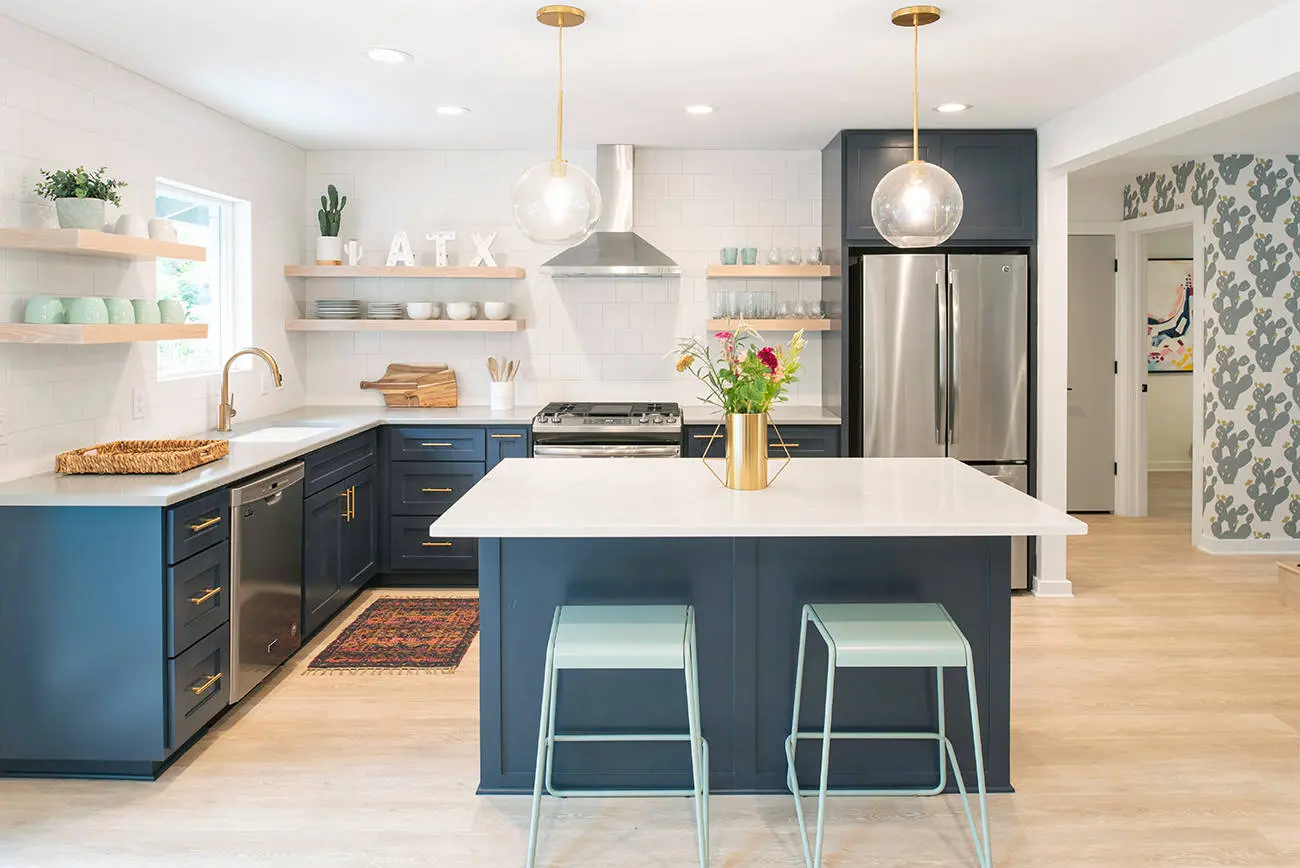In an era marked by rapid urbanization and evolving rental trends housing development, the kitchen has transcended its traditional culinary role to become a dynamic multifunctional hub for modern renters. This shift underscores the importance of creative kitchen designs that seamlessly blend versatility, efficiency, and contemporary style. The concept of multipurpose and multifunctional kitchen design now extends beyond conventional boundaries, catering to the diverse needs and lifestyles of today’s residents.
Whether it’s a compact studio, exclusive apartments in Philadelphia, or a spacious loft conversion, the modern kitchen serves not only as a culinary workspace but also as a social center, entertainment area, and smart storage solution. Consequently, designers and architects are continually innovating kitchen layouts and configurations to maximize functionality while promoting a smooth integration between cooking, dining, and living areas.
Regardless of a home’s size—cozy or expansive—the kitchen remains the heart of the residence, especially for individuals who relish cooking and hosting social gatherings. With this in mind, continue reading as this article explores multifunctional kitchen design for renters and provides additional valuable insights.
Consider the Kitchen Work Triangle Rule
Efficient kitchen functionality depends on various tasks, primarily cleaning, food preparation, and cooking. The kitchen work triangle rule strategically positions these core activities to minimize movement and maximize productivity in the kitchen workspace.
Known as the “golden triangle,” this design principle allocates specific locations for the sink, stove or oven, and refrigerator—the three main work zones in any kitchen. Philadelphia rental property managers endorse this concept, emphasizing long-lasting functionality and user-friendly layouts.
By situating these elements within optimal proximity, the kitchen workflow becomes smoother, reducing unnecessary steps between preparation, cooking, and storage areas. The ideal layout allows chefs or home cooks to navigate effortlessly without congestion or wasted energy.
Embracing the kitchen work triangle remains a favored design guideline because it balances functionality and aesthetic appeal, creating workspaces that simplify meal preparation and promote efficient kitchen traffic flow.
Reducing Clutter with Hidden Functionality Features
- Concealed Storage
Modern kitchen upgrades that enhance rental value frequently incorporate concealed storage solutions to reduce clutter. Hidden cabinets and drawers integrated under countertops or within kitchen islands offer ample space to store appliances, utensils, and cookware out of sight yet within easy reach.
This smart storage approach maximizes available space and fosters a clean, streamlined aesthetic that enhances both usability and visual appeal. With clutter neatly tucked away, kitchens become more inviting and organized, promoting efficient meal prep and enjoyable cooking experiences.
- Utilizing Hooks on Walls
Maximizing vertical space by adding hooks to walls helps free up busy countertops while maintaining an organized kitchen environment. Hanging items such as mugs, dish towels, or utensils creates a neat and visually pleasing solution that is increasingly popular in contemporary kitchen designs. Adhesive hooks offer a simple installation method and can even conceal imperfections on walls when kitchenware is arranged thoughtfully.
- Organizing Vertical Storage
Clutter isn’t limited to countertops—dishware and cookware can accumulate on shelves if not properly organized. Utilizing vertical storage options, such as floating shelves or wall-mounted racks, helps showcase favorite cookbooks, decorative plates, or spice jars while freeing up valuable counter space for frequently used items.
This strategy is especially advantageous in compact kitchens with limited storage, as it reduces visual clutter and adds personality and flair to the kitchen ambiance.
Understanding Lease Agreements Regarding Modifications in Rentals
For tenants eager to personalize their rental kitchens, comprehending the terms governing property modifications in lease agreements is crucial. These agreements typically outline conditions under which alterations or improvements are permitted, including any necessary permissions or restrictions imposed by landlords or property managers.
- Review Lease Terms Thoroughly
Tenants should carefully examine lease clauses related to renovations or modifications. Pay attention to provisions detailing which changes require landlord approval and which are prohibited, especially regarding structural alterations that may affect property integrity.
- Communicate With Your Landlord
Discuss any planned kitchen modifications with your landlord upfront. Transparent and respectful communication facilitates mutual understanding and may lead to a verbal or written agreement on permissible changes.
Clearly articulate the scope and purpose of intended modifications, whether adjusting lease duration, rent, or terms related to alterations. Establishing a clear dialogue helps avoid misunderstandings.
- Be Prepared to Negotiate
Negotiation is often necessary to reconcile tenant desires with landlord concerns. Both parties should express their positions openly to arrive at a compromise that respects property value and tenant satisfaction.
- Document All Agreed Modifications
Once modifications are approved, ensure that all agreements are documented in writing and signed by both parties. This documentation should specify obligations such as restoring the property to its original state upon lease termination if required.
Maintaining clear, written records protects all involved and fosters a smoother rental experience.
- Keep Copies of All Modified Lease Documents
Both tenant and landlord should retain signed copies of all lease amendments or modifications for future reference. This practice helps prevent disputes and clarifies responsibilities related to kitchen upgrades or changes.
Conclusion
The kitchen serves as the vibrant core of your home, vital for everything from quick breakfasts to cherished family dinners and social gatherings. Because of its central role, it must combine beauty and function seamlessly. Whether you’re cooking, cleaning, dining, or entertaining, your kitchen should be a comfortable and efficient sanctuary.
Kitchen layouts in rental apartments vary widely, influencing how to achieve the ideal kitchen design. Whether constructing a new property or remodeling an existing one, the practical tips covered here will guide you in creating a functional and appealing kitchen space that adds value and comfort to your home.
Additionally, if you are interested in exploring Customizing Closets & Modular Cabinets in Tampa, be sure to visit our Kitchen category for more expert information and resources.
As urban living spaces become increasingly compact, the demand for multifunctional kitchens continues to rise. Homeowners and renters alike seek kitchens that optimize every inch without compromising style. Innovations such as modular furniture, fold-away counters, and smart appliances contribute to creating adaptable kitchens that cater to cooking, socializing, and storage needs. Investing in versatile kitchen solutions not only enhances daily convenience but also boosts property appeal and rental value. By embracing multifunctional design principles, you can transform your kitchen into a highly efficient area that perfectly fits modern lifestyles.


